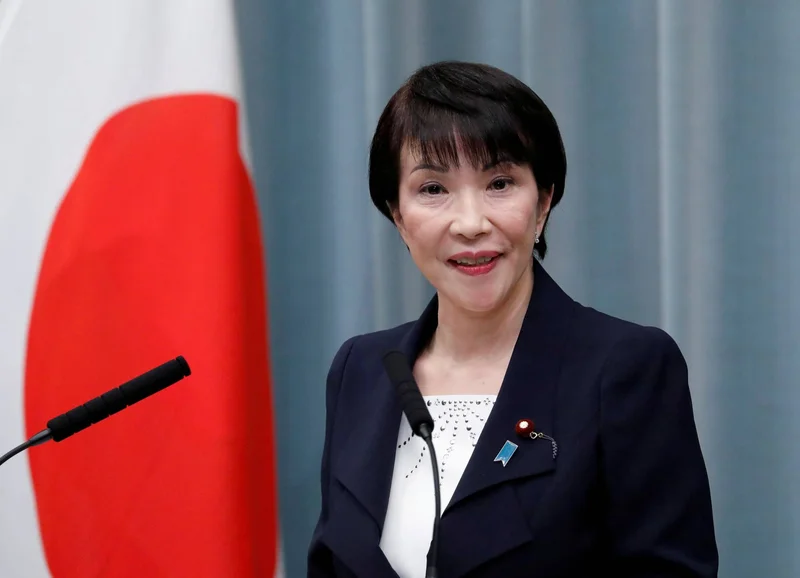Article Directory
Here is the feature article, written from the persona of Dr. Aris Thorne.
*
Imagine the scene in Japan’s parliament. The air is thick with history, a place where traditions are measured in centuries, not years. Then, the announcement comes: Sanae Takaichi is the new prime minister. The first woman to ever hold the office. You can almost feel the tectonic plates of history shifting. It’s a headline that flashes across the globe, a powerful symbol of a barrier shattering. In a world I’m obsessed with—a world of breakthroughs and paradigm shifts—this should be an unambiguous leap forward. It’s the kind of moment that feels like an upgrade to a country’s entire operating system.
When I first saw the news, I honestly just sat back in my chair, speechless. Not from pure celebration, but from a profound sense of paradox. Because when you look past the stunning new user interface—Japan’s first female leader—and start examining the source code of her ideology, you find something that isn’t new at all. In fact, it looks a lot like the old system, just with a different icon on the desktop. This is the kind of puzzle that fascinates me, the kind of beautiful, frustrating contradiction that reminds us that human progress is never, ever a straight line.
A System Upgrade, or Just New Wallpaper?
Let’s get into the data. On one hand, you have a woman who broke through from a non-political family, paying her own way through college with part-time jobs. A woman who loves heavy metal, rides motorcycles, and even played drums in a band. This is the biography of a disruptor, an outsider ready to rewrite the rules. But then you look at the policies, the core programming, and the narrative fractures.

This is a leader who openly admires Margaret Thatcher, a figure known for her unyielding conservatism. She opposes same-sex marriage and believes women should not keep their maiden names after marriage—in simpler terms, she supports social policies that reinforce the very traditional structures that have historically held women back. She promised to raise female representation in her cabinet to "Nordic levels," a bold, visionary statement. The final number? Two. Just two women. This isn't a bug; it's a feature of a deeper ideology. It’s like downloading a revolutionary new app, only to find it’s just a skin for the same old software you were trying to escape.
The real head-scratcher for me is how a system can produce a result that seems to contradict its own inputs. How does a nation ranked 118th in the world for gender equality, the lowest in the G7, produce its first female leader in the form of someone who champions male-only succession to the throne? It's a paradox that makes you question the very nature of what we call "progress." Is it merely about changing the faces in the pictures, or is it about changing the architecture of the room itself? What does it mean for the future when the symbol of a breakthrough is a person who may actively work to prevent the next one?
The Ghost in the Machine
This isn’t just about Japan; this is a pattern we’re seeing globally. It’s a kind of historical sleight of hand. The system—whether it's a political party, a corporation, or a social structure—learns to adapt. It finds a way to present a progressive face to the world while preserving its core functions. This is the ghost in the machine. It’s the legacy code running silently in the background, ensuring that even with a new user at the helm, the old directives are still executed.
We see this in Takaichi’s political lineage. She’s a protégé of the late Shinzo Abe, a titan of Japanese conservative politics. She’s not a revolutionary who stormed the castle; she’s an insider who was handed the keys. Her hawkish views on China, her push for tougher immigration, her visits to the controversial Yasukuni Shrine—these aren't the actions of a new-guard radical, but of an old-guard loyalist.
The sheer complexity of a person who worked for a trailblazing American feminist congresswoman like Pat Schroeder and yet dedicates her political life to conservative, traditionalist principles is just staggering—a contradiction explored in profiles like 5 things to know about Sanae Takaichi, Japan's first female prime minister - NPR—and it means the gap between a person’s experience and their ideology can be a chasm, and it forces us to ask what truly shapes a leader’s vision. Is it their personal journey, or the political machine they must master to gain power? This is the ethical consideration we have to make. We have a responsibility to look past the inspiring headline and ask the harder questions. Celebrating the symbol is easy. Understanding the system is the real work.
The Code Behind the Icon
So, what’s the real story here? It’s not one of failure, but of a deeply complex evolution. Sanae Takaichi’s rise isn't the clean, triumphant narrative we wish it were. It’s messy, contradictory, and profoundly human. It shows us that breaking a glass ceiling is one thing, but redesigning the building is a far more difficult task. The system has learned to put a new face on the cover, to change its avatar. But the core programming remains. We’ve been given a glimpse of a different future, but we’re still running on old hardware. The real breakthrough won’t be just electing a woman; it will be when a leader’s policies finally match the promise of their presence.
